Abstract
The histological detection of tumour metastases in axillary lymph nodes from cases of breast carcinoma is of major prognostic significance, but may be difficult when metastases are of microscopic size. We have therefore investigated whether immunohistological techniques can increase the accuracy of metastasis detection in axillary lymph nodes. Forty-five cases of breast carcinoma were studied, in all of whom the axillary lymph nodes had been reported as free of metastases. Paraffin sections from these cases were stained by immunoenzymatic techniques, using monoclonal antibodies directed against human milk fat globule membrane antigen ("anti-EMA") and against epithelial intermediate filaments ("anti-keratin"). In 4/12 cases of lobular carcinoma and in 3/33 cases of ductal carcinoma, previously unsuspected micrometastases were revealed by immunohistological staining, representing an overall increase in detection rate of 15% (and of 33% for the lobular carcinoma cases). In addition to this group of 45 histologically "negative" biopsies, 12 samples were studied in which only a proportion of the nodes had been reported as containing tumour. In 5 of these cases immunostaining revealed previously undetected metastases. These findings suggest that immunohistological analysis may have a routine role to play in the staging of breast carcinoma. It is noted that the 15% increase in diagnostic accuracy achieved in the present study is comparable to the proportion of breast carcinoma patients in whom disseminated disease develops despite their axillary lymph nodes being reported as tumour-free at the time of surgery.
Full text
PDF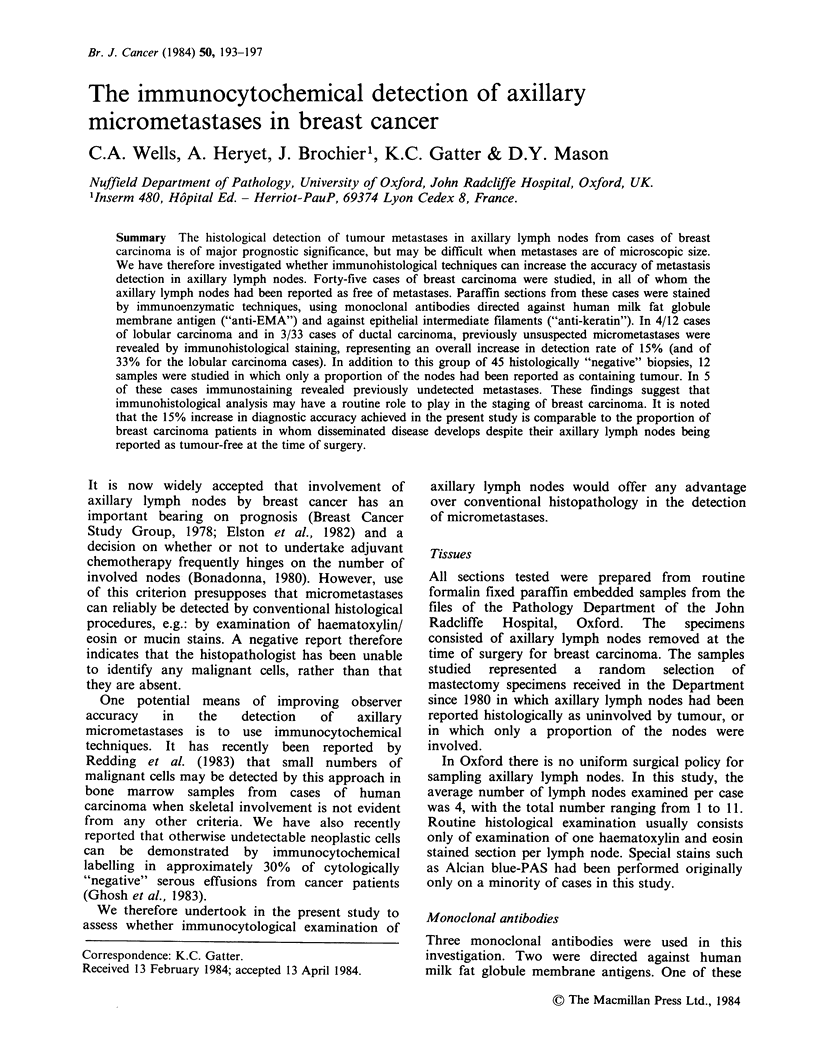
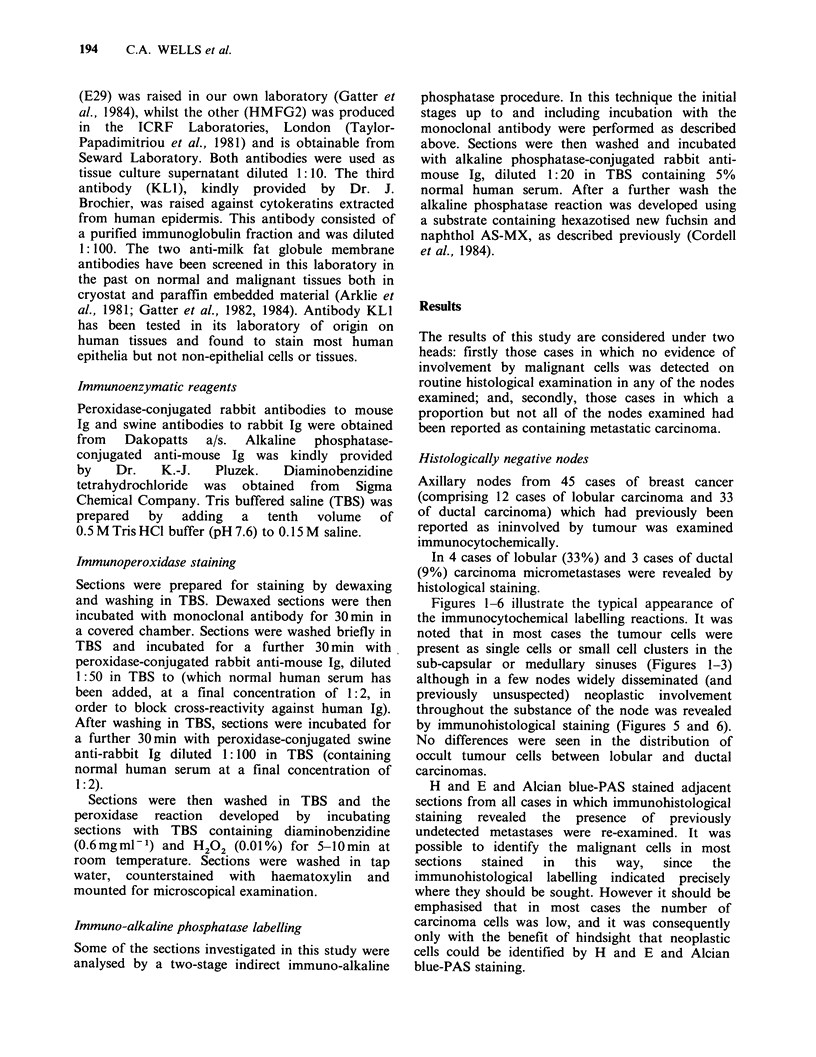
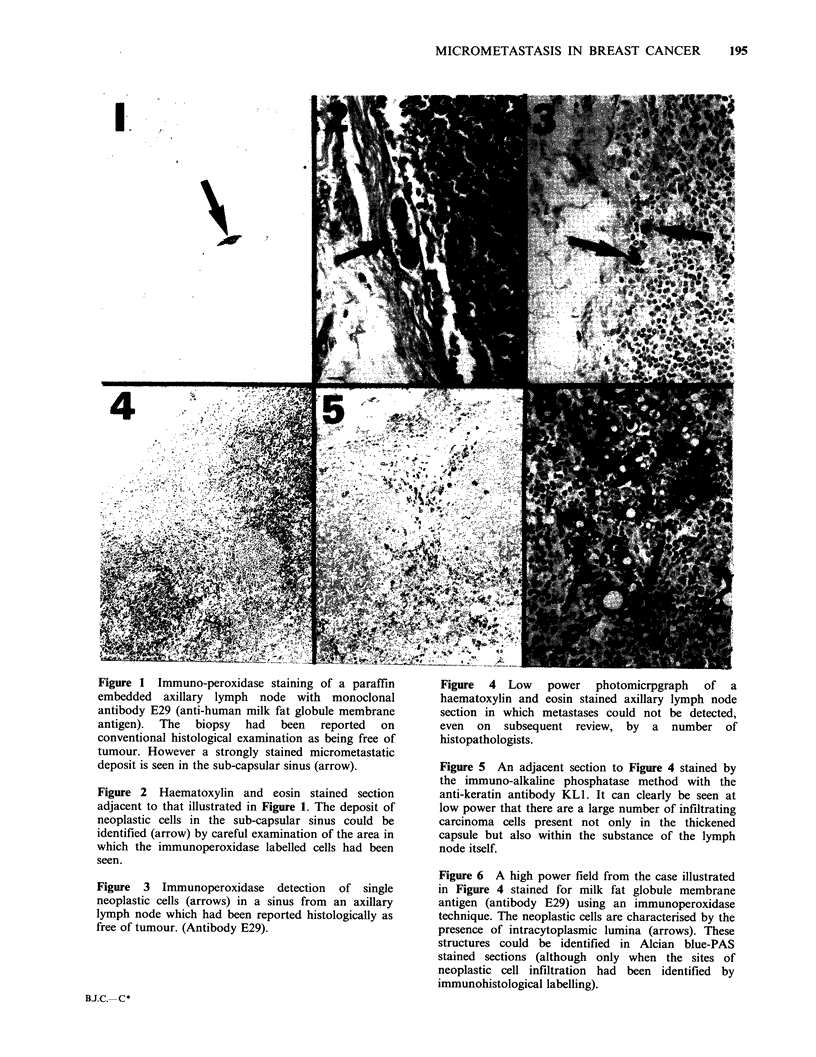
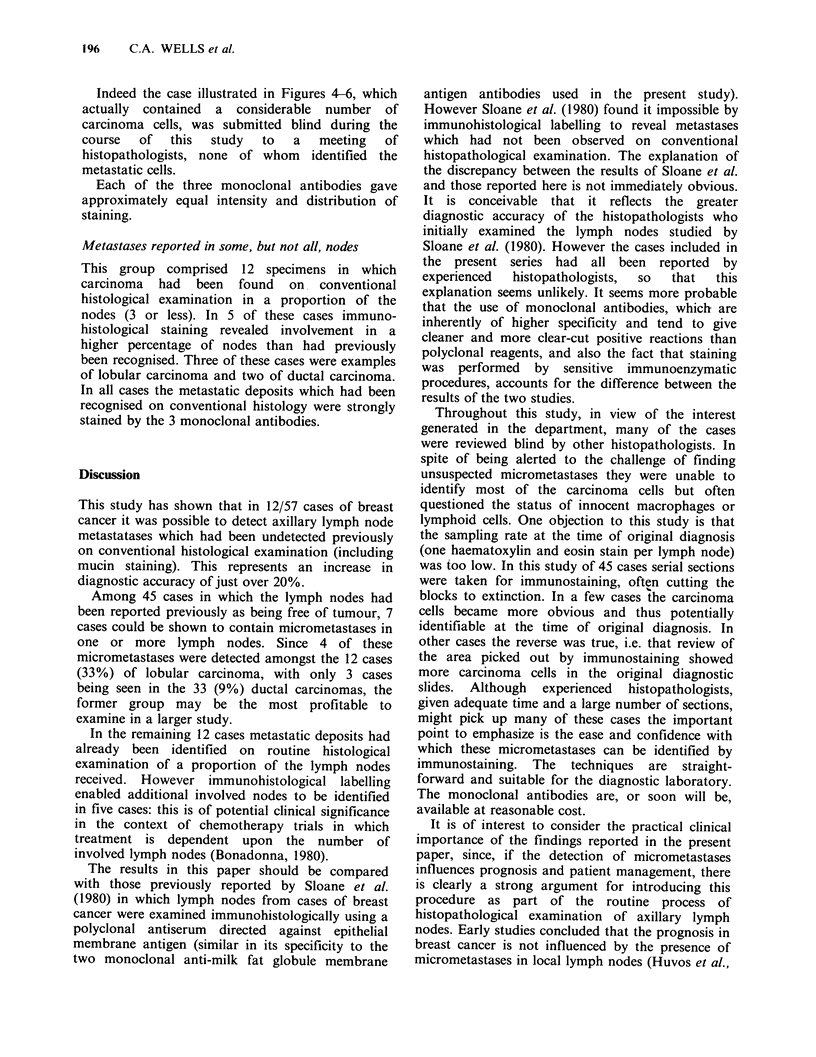
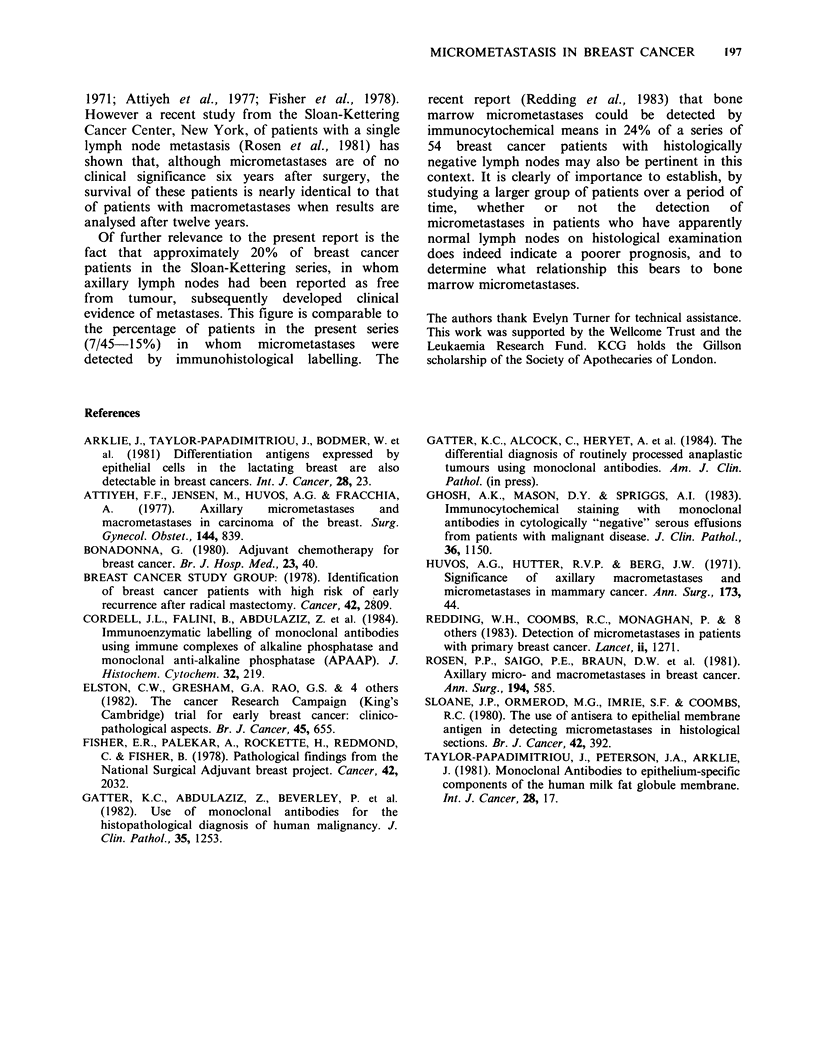
Images in this article
Selected References
These references are in PubMed. This may not be the complete list of references from this article.
- Attiyeh F. F., Jensen M., Huvos A. G., Fracchia A. Axillary micrometastasis and macrometastasis in carcinoma of the breast. Surg Gynecol Obstet. 1977 Jun;144(6):839–842. [PubMed] [Google Scholar]
- Bonadonna G. Adjuvant chemotherapy of breast cancer. Br J Hosp Med. 1980 Jan;23(1):40–passim. [PubMed] [Google Scholar]
- Cordell J. L., Falini B., Erber W. N., Ghosh A. K., Abdulaziz Z., MacDonald S., Pulford K. A., Stein H., Mason D. Y. Immunoenzymatic labeling of monoclonal antibodies using immune complexes of alkaline phosphatase and monoclonal anti-alkaline phosphatase (APAAP complexes). J Histochem Cytochem. 1984 Feb;32(2):219–229. doi: 10.1177/32.2.6198355. [DOI] [PubMed] [Google Scholar]
- Elston C. W., Gresham G. A., Rao G. S., Zebro T., Haybittle J. L., Houghton J., Kearney G. The cancer research campaign (King's/Cambridge trial for early breast cancer: clinico-pathological aspects. Br J Cancer. 1982 May;45(5):655–669. doi: 10.1038/bjc.1982.106. [DOI] [PMC free article] [PubMed] [Google Scholar]
- Fisher E. R., Palekar A., Rockette H., Redmond C., Fisher B. Pathologic findings from the National Surgical Adjuvant Breast Project (Protocol No. 4). V. Significance of axillary nodal micro- and macrometastases. Cancer. 1978 Oct;42(4):2032–2038. doi: 10.1002/1097-0142(197810)42:4<2032::aid-cncr2820420453>3.0.co;2-o. [DOI] [PubMed] [Google Scholar]
- Gatter K. C., Abdulaziz Z., Beverley P., Corvalan J. R., Ford C., Lane E. B., Mota M., Nash J. R., Pulford K., Stein H. Use of monoclonal antibodies for the histopathological diagnosis of human malignancy. J Clin Pathol. 1982 Nov;35(11):1253–1267. doi: 10.1136/jcp.35.11.1253. [DOI] [PMC free article] [PubMed] [Google Scholar]
- Ghosh A. K., Mason D. Y., Spriggs A. I. Immunocytochemical staining with monoclonal antibodies in cytologically "negative" serous effusions from patients with malignant disease. J Clin Pathol. 1983 Oct;36(10):1150–1153. doi: 10.1136/jcp.36.10.1150. [DOI] [PMC free article] [PubMed] [Google Scholar]
- Huvos A. G., Hutter R. V., Berg J. W. Significance of axillary macrometastases and micrometastases in mammary cancer. Ann Surg. 1971 Jan;173(1):44–46. doi: 10.1097/00000658-197101000-00006. [DOI] [PMC free article] [PubMed] [Google Scholar]
- Redding W. H., Coombes R. C., Monaghan P., Clink H. M., Imrie S. F., Dearnaley D. P., Ormerod M. G., Sloane J. P., Gazet J. C., Powles T. J. Detection of micrometastases in patients with primary breast cancer. Lancet. 1983 Dec 3;2(8362):1271–1274. doi: 10.1016/s0140-6736(83)91150-9. [DOI] [PubMed] [Google Scholar]
- Rosen P. P., Saigo P. E., Braun D. W., Weathers E., Fracchia A. A., Kinne D. W. Axillary micro- and macrometastases in breast cancer: prognostic significance of tumor size. Ann Surg. 1981 Nov;194(5):585–591. doi: 10.1097/00000658-198111000-00006. [DOI] [PMC free article] [PubMed] [Google Scholar]
- Sloane J. P., Ormerod M. G., Imrie S. F., Coombes R. C. The use of antisera to epithelial membrane antigen in detecting micrometastases in histological sections. Br J Cancer. 1980 Sep;42(3):392–398. doi: 10.1038/bjc.1980.250. [DOI] [PMC free article] [PubMed] [Google Scholar]
- Taylor-Papadimitriou J., Peterson J. A., Arklie J., Burchell J., Ceriani R. L., Bodmer W. F. Monoclonal antibodies to epithelium-specific components of the human milk fat globule membrane: production and reaction with cells in culture. Int J Cancer. 1981 Jul 15;28(1):17–21. doi: 10.1002/ijc.2910280104. [DOI] [PubMed] [Google Scholar]



